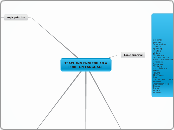Errors and Corrections
How to take Cornell Notes?
Teaching Language
As A System
UV-LEI
Pilar Piedragil
May 9, 2021.
Mistake
- Proof that learning is happening.
- Independent from t he teacher's capacities.
This section should be written soon after class, while you still have a fresh memory of the content taught. In this column, you can add:
- keywords
- questions that will connect points
- anticipated exam questions
- vocabulary words
This will make the learning and remembering process easier.
Attempt
Students try to say something they haven't learned to produce yet and they do it incorrectly.
Error
Mistake students cannot correct themselves or doesn't have the criteria to do so.
Real errors made by EFL students
I commonly don't like to interrupt students when they're trying to produce, I wait until they're done participating.
I also prefer to ask all the class for a correction than asking only one student, but sometimes I do ask the student for self-correction because I know that he/she has the knowledge and capacity.
I like ballet.
After the student's participation I wrote down some words on the board (ballet, buffet, bouquet). I asked students what these words had in common and asked them to pronounced them. All students pronounced them incorrectly and I explained why the -et in these words shouldn't be pronounced.
This is a beard.
The student wanted to say bird and pronounced beard.
Right after the student's participation I explained the pronunciation of some words that are commonly mispronounced (bird, beard, beer, bear).
I want desert.
The student pronounced dessert as desert, I corrected the error after his participation by doodling both words on the board and asking the class the terms for both, and explaining the correct pronunciation.
I want coke.
This was a mistake done in a role-playing activity, I corrected the student right away. That was an adult class, so I was able to explain why the article was necessary and how that mistake could put them in trouble.
An university.
The student completed an exercise on articles with an because university starts with U. After his participation I asked everyone the pronunciation for the word university and explained why an is not the correct article.
I go to school by foot.
At the end of the participation I wrote down two means of transportation (car and bike), asked students what verb should be used with them, and then asked about walking, and explained we should say on foot or walking.
I get down the bus.
The student use the wrong collocation (get down instead of get off),
I corrected after the student finished her participation and explained in a comical way why it was incorrect.
She said me.
Using said instead of told.
Can you borrow me a pencil?
A the end of the participation I wrote down on the board: borrow and lend.
I wrote two sentences using both verbs and explained that in Spanish we only use one verb to express both meanings.
Classification of errors
Transfer errors
Bringing patterns from the mother tongue into second language utterances.
Developmental errors
Proof that students' learning.
Pronunciation errors
Done when speaking.
Discourse errors
Incorrect organization and linking of the texts.
Grammar errors
Related to the structures.
Lexical errors
Use of the wrong words for the meaning intended.
Slip
Mistake that students can correct themselves once it's been pointed out.
Extra resources:
Articles
Place of Error Correction in English Language Teaching
Error correction
Videos
Giving Feedback to English Learners in ESL/EFL Classes
Error Correction Strategies to Maximize Student Learning









